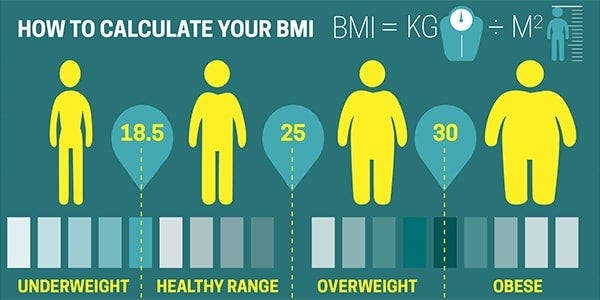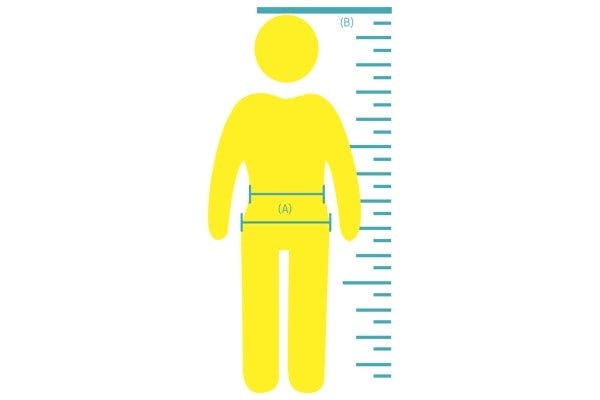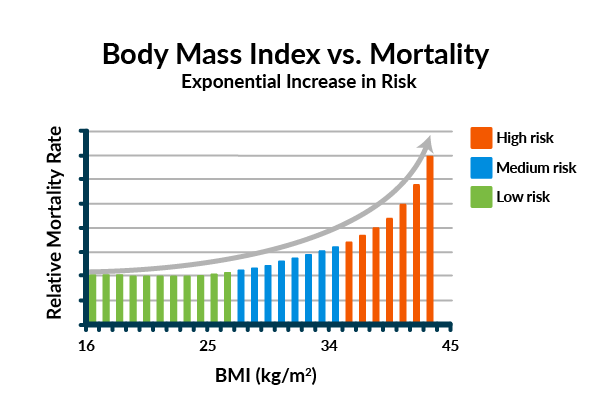BMI Calculator for Women in kg & cm | WW NZ
BMI calculator for women & men
Enter your weight in kg and height in cm (for males and females) to see where you sit on the scale and what it means.

What is BMI?
BMI stands for Body Mass Index. It’s a tool that’s used to universally measure relative health risks associated with weight for both women and men. It can also give you an indication of whether you are in a healthy weight range.
How is BMI calculated?
Your BMI is calculated by your weight divided by the square of your height (BMI = M (mass) / H (height)). You can also enter your details in our BMI finder.
Follow our sustainable and simple weight loss program
BMI ranges
Now that you know your BMI, check where you sit in the BMI range below:

Your BMI is under 18.5 – you are considered to be underweight.
Your BMI is between 18.5 and 24.9 – you are considered to be within a healthy weight range.
Your BMI is between 25.0 and 29.9 – you are considered to be overweight.
Your BMI is over 30 – you are considered to be obese.
My BMI is too high, what can I do to lose weight?
A good initial goal to aim for is losing 10% per cent of your body weight. Even if that’s not enough to push you into a healthy weight range, it’s a great start when you’re overweight, with research showing it’s enough to deliver health benefits, like lowering risk factors for type 2 diabetes and heart disease. The WeightWatchers program encourages members to focus on realistic weight-loss goals and provides the skills and techniques to help you achieve them.
Is BMI more important for women or men?
The same BMI measurements apply to both genders as the same risks of developing weight-related illness applies to both women and men.
Research has made the connection between having a higher BMI and an increased risk of a number of diseases, including heart disease, type 2 diabetes, osteoarthritis and certain types of cancer including breast cancer.
Is BMI 100% accurate?
BMI has many limitations and it’s not always accurate for everybody. It doesn’t distinguish between fat and muscle, so people who have a large muscle mass will often have a high BMI, even though their body fat is in the healthy range. Plus, a healthy BMI doesn’t always correlate with good health. In fact, research shows that one in three people who have healthy BMIs are relatively unhealthy once other test results, such as blood pressure, blood glucose and cholesterol are taken into account.
One explanation is that BMI doesn’t reflect where body fat is stored, and it’s possible to have a healthy BMI, while carrying too much fat around your waist, a location that poses more of a health risk than weight carried on your hips and thighs. A 2017 study proved that point, finding that people who carry weight around their middle but have healthy BMIs are at the highest risk of death from any cause, compared to people with higher BMIs who carry the weight elsewhere.
“If I had to choose between making sure my BMI or my waist-to-hip ratio are within the ‘normal’ range, I would go for the latter,” says the University of Sydney’s Associate Professor Emmanuel Stamatakis, who co-led the study. “A high waist-to-hip ratio most likely means high amounts of abdominal fat, and we know this comes with quite serious health risks.”
Should I calculate my BMI?
Yes. BMI provides a snapshot of how weight affects the risk of medical problems for a population of people, so while it may not be a perfect measure of medical risk for every individual, it’s still very valuable as feedback for you.
But, while it is a good idea to calculate and know what your BMI is, no one piece of feedback about your weight or health should be viewed in isolation, so it’s really important to consider your BMI in context of other information and measurements.
What other health measurements matter?

There are two you should take:
Divide your waist measurement (in centimetres) by your hip measurement (in centimetres). A waist-to-hip ratio of more than 0.9 for men and 0.85 for women indicates an increased health risk.
B) Your waist-to-height ratio:
Divide your waist measurement (in centimetres) by your height (in centimetres). For good health, research shows that keeping your waist circumference to less than half your height – or a ratio no bigger than 0.5 – is wise.
How the WeightWatchers program can help lower your BMI
Enjoy eating well as you get back into a healthy BMI range
BMI Frequently Asked Questions
The BMI scale is the same for both men and women. It takes into account a person’s height and weight.
BMI is a simple calculation using a person’s height and weight. The formula is BMI = kg/m2 where kg is a person’s weight in kilograms and m2 is their height in metres squared. Enter your weight and height into our BMI calculator to find your result.
For most adults, at most ages, an ideal BMI is in the 18.5 to 24.9 range.
Yes
A BMI of 18.5–24.9 is considered “normal” weight with a low risk of poor health, while anything above or below may indicate a higher risk of poor health.

For most adults, an ideal BMI is in the 18.5 to 24.9 range.






